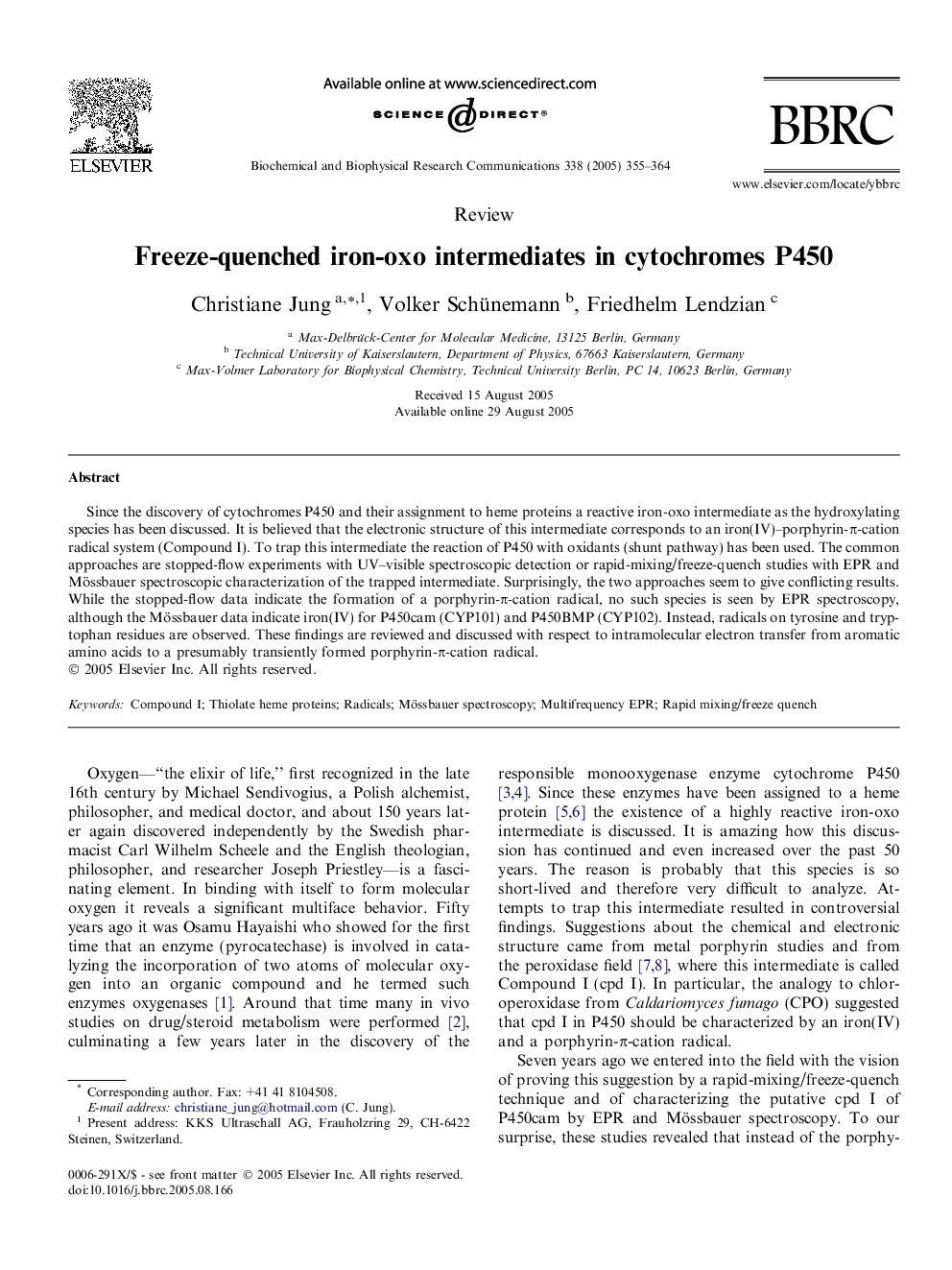| Article ID | Journal | Published Year | Pages | File Type |
|---|---|---|---|---|
| 10768175 | Biochemical and Biophysical Research Communications | 2005 | 10 Pages |
Abstract
Since the discovery of cytochromes P450 and their assignment to heme proteins a reactive iron-oxo intermediate as the hydroxylating species has been discussed. It is believed that the electronic structure of this intermediate corresponds to an iron(IV)-porphyrin-Ï-cation radical system (Compound I). To trap this intermediate the reaction of P450 with oxidants (shunt pathway) has been used. The common approaches are stopped-flow experiments with UV-visible spectroscopic detection or rapid-mixing/freeze-quench studies with EPR and Mössbauer spectroscopic characterization of the trapped intermediate. Surprisingly, the two approaches seem to give conflicting results. While the stopped-flow data indicate the formation of a porphyrin-Ï-cation radical, no such species is seen by EPR spectroscopy, although the Mössbauer data indicate iron(IV) for P450cam (CYP101) and P450BMP (CYP102). Instead, radicals on tyrosine and tryptophan residues are observed. These findings are reviewed and discussed with respect to intramolecular electron transfer from aromatic amino acids to a presumably transiently formed porphyrin-Ï-cation radical.
Related Topics
Life Sciences
Biochemistry, Genetics and Molecular Biology
Biochemistry
Authors
Christiane Jung, Volker Schünemann, Friedhelm Lendzian,
